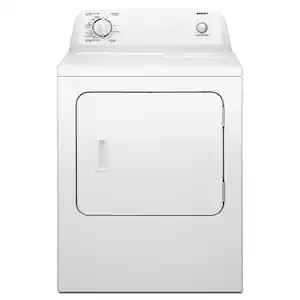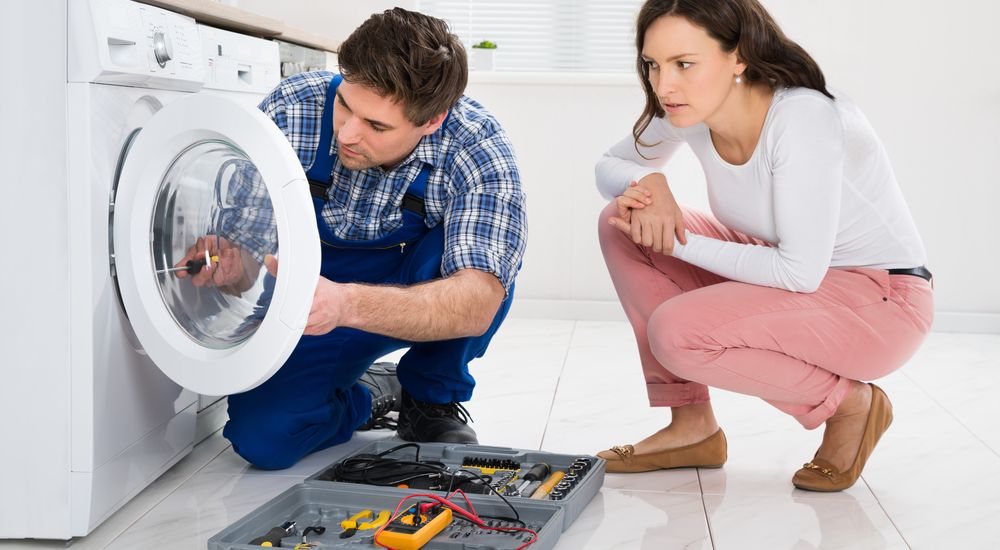Working time:
Monday to Saturday: 8:00 A.M. – 7:00 P.M.
Sunday: 9:00 A.M. - 4:00 P.M.
Working time:
Monday to Saturday: 8:00 A.M. – 7:00 P.M.
Sunday: 9:00 A.M. - 4:00 P.M.
Client Services:
Client Services:
Roper Dryer Repair
Roper dryers are known for their simplicity and reliability, but like any appliance, they can experience issues over time. Common problems with Roper dryers include the dryer not heating, long drying times, unusual noises, or the dryer not starting. These issues can be caused by various factors such as worn-out components, clogged vents, or electrical failures. Below, you’ll find common problems, troubleshooting steps, and practical solutions to help maintain your Roper dryer’s efficiency.

Common Problem
Roper dryers may encounter issues such as no heat, prolonged drying times, loud noises, or failure to start. These problems are typically caused by regular use, vent blockages, or malfunctions in key parts like the heating element, thermostat, or drive motor.
If your dryer isn’t heating, the issue could be with the heating element, thermal fuse, or thermostat. Prolonged drying times are often due to restricted airflow, typically from a clogged lint trap or vent. Unusual noises can result from worn drum support rollers, a broken belt, or debris in the drum. If your dryer won’t start, it could be a result of a malfunctioning door switch, start switch, or control board. Promptly addressing these issues will help your Roper dryer continue to perform at its best.
Roper Clothes Dryers Troubleshooting
If your Roper dryer is not producing heat, begin by inspecting the heating element for signs of wear or damage. A blown thermal fuse could also prevent the dryer from heating, so check it for continuity with a multimeter. The thermostat could be malfunctioning as well, so test it to ensure it’s working properly. If any of these components are faulty, replacing them should restore heat to your dryer.
If your dryer is taking too long to dry clothes, it’s likely due to airflow restrictions. First, check and clean the lint trap. A clogged vent hose can also reduce airflow, so inspect it for any blockages or kinks. Ensure the external vent leading outside is unobstructed. If the blower wheel is damaged or clogged, it may need to be replaced to improve airflow.
Unusual noises from your Roper dryer, such as banging, grinding, or squeaking, can usually be traced back to worn drum support rollers or a broken belt. Inspect the rollers and bearings for wear and replace them as needed. Also, check the belt for any signs of damage or slack. Lastly, look for any debris inside the drum that could be causing the noise.
If your dryer isn’t starting, make sure it is properly plugged in and check that the power outlet is functioning. Inspect the door switch to ensure it is properly engaging, as a faulty door switch can prevent the dryer from starting. Test the start switch for continuity with a multimeter. If the start switch or control board is malfunctioning, it may need to be replaced.
If your Roper dryer is overheating, it’s likely due to blocked airflow. Clean the lint filter and vent system thoroughly, as blockages can cause the dryer to overheat. Inspect the cycling thermostat for proper operation and ensure the heating element is working correctly. If the thermostat is faulty, replace it to resolve the overheating issue.
Top 6 Problems and Solutions for your Roper dryer
Unusual Noise During Operation
1. Inspect the drum support rollers for wear
2. Examine the drive belt for damage or slippage
3. Check the drum for any foreign objects
4. Inspect the motor for faults
5. Replace worn or damaged components as needed
Irregular Drum Movement
1. Check for Overloading
2. Inspect the Suspension Springs
3. Examine the Shock Absorbers
4. Verify the Drum Bearings
5. Calibrate the Machine
Dryer Not Starting
1. Verify the power supply and circuit breaker
2. Check the door switch for proper functionality
3. Test the start switch for continuity
4. Inspect the control board for any issues
5. Replace any faulty electrical components
Dryer Overheating
1. Clean the lint filter and vent system
2. Test the cycling thermostat for accuracy
3. Inspect the heating element for faults
4. Ensure the blower housing is clear
5. Replace any malfunctioning components
Dryer Not Spinning
1. Verify the dryer isn’t overloaded
2. Inspect the drive belt for damage or slippage
3. Check the motor coupler for wear
4. Test the lid switch for proper engagement
5. Replace any defective components as needed
Dryer Not Heating
1. Inspect the heating element for visible damage
2. Test the thermal fuse for continuity
3. Check the thermostat for proper operation
4. Ensure the power supply is functioning
5. Replace any defective components as needed
Additional Roper Dryer Troubleshooting Techniques
For optimal performance, always clean the lint filter after every cycle to prevent lint buildup. A clogged filter can affect drying efficiency and cause the dryer to overheat. Check the vent hose and external vent regularly for blockages, as restricted airflow is a common cause of long drying times and overheating.
If your dryer still isn’t heating, inspect the components like the thermal fuse, door switch, and heating element. Use a multimeter to test these components for continuity and replace any that are defective.
Unusual noises can often be resolved by replacing worn drum rollers, a damaged belt, or clearing any foreign objects caught in the drum. If the noise persists, examine the motor and bearings, as these can be the source of grinding or squeaking sounds.
If your dryer won’t start, confirm that the power outlet is working, and the door switch is engaging properly. If the start switch is faulty, replacing it may restore normal operation.

Schedule an Appointment Online
Contact us:
Phone Number
+1 (855) 879-9929
info@washer-dryer-repair-service.com
Working Hours
Mon – Sat: 8AM – 7PM
Sun: 9AM – 4PM
